Although we have crisscrossed Dalmatia many times, we are still discovering many beautiful spots when making day trips from our campsite in Slano. This summer we decided to explore the Geopark Biokovo-Imotski Lakes, an area of exceptional cultural, historical and natural heritage.
When mentioning Imotski, what usually comes to mind for most people are the Modro and Crveno (Blue and Red) Lakes, but there are also other amazing lakes in the surroundings waiting to be included into the UNESCO World Heritage List.
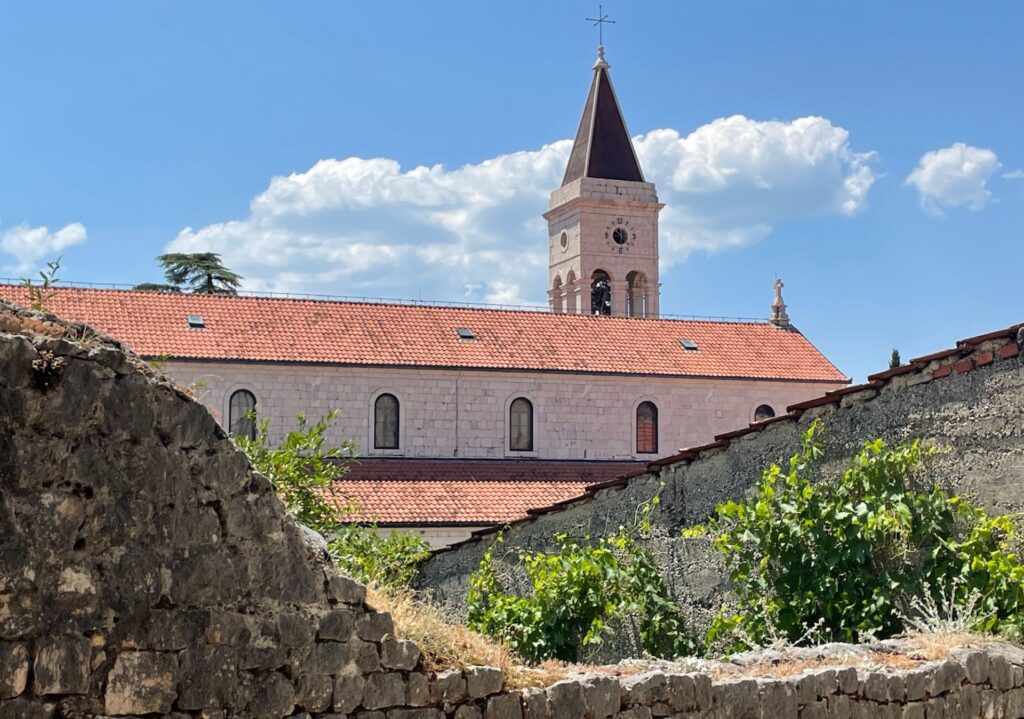
Imotski is located in the hinterland of Makarska Riviera. Thanks to its climate and architecture, it has the characteristics of a Dalmatian town. No wonder, as the sea is just 30 km away. Imotski’s medieval fortress Topana, which overlooks the town’s Blue Lake, is one of the most obvious signs of the history of this area. The tower of Topana still dominates the skyline in Imotski despite being a shell of what it once was.
You can reach the Blue Lake beneath Topana Fortress on foot, if you are in a good shape (photo from the internet). In the late 19th century, a path (1,100 m long) has been built to make the access easier, and the stone steps zigzag all the way down to the lake. Although we did not descend, as it was an extremely hot day, we could imagine that it would be a great experience to swim in the lake with a view of the surrounding cliffs. The Blue Lake dries up every few years, and the people of Imotski use this opportunity to play a football match on its bed. The lake derby between the “Werewolves” (Vukodlaci) and “Elves” (Vilenjaci”) is a spectacle that attracts many football fans from the region.
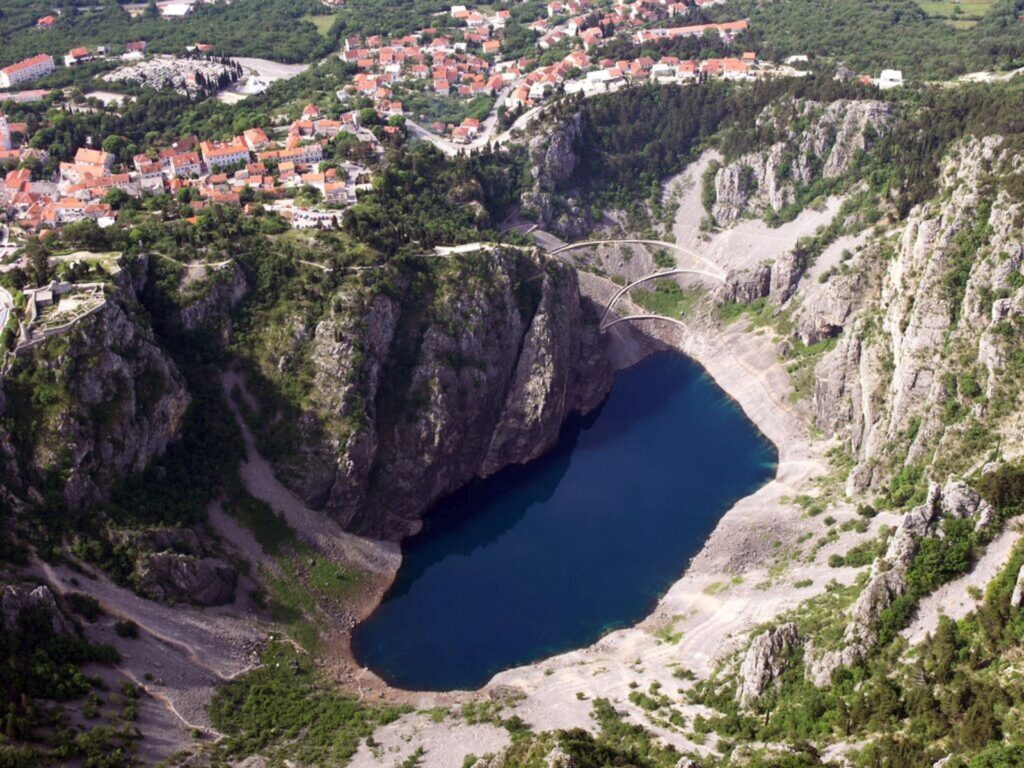
After a walk through the charming old town and the green shady park, we continued by car to the Red Lake that is situated approximately 1.5 km from Imotski. This lake is one of the deepest karst lakes in Europe; it got its name from the red rocks that surround it. You cannot swim in the Red Lake, nor reach it without high-quality mountaineering equipment. Just imagine that the lake was created by the collapse of the ceiling of a large underground cavity.
We parked our car in the forest above the lake, and – although the sun was burning – made the walk to the viewpoint, which took us around 30 minutes in both directions. If you would like to do this, I would recommend you to wear sneakers, as the uneven trail leads through the forest.
The view at the end of the trail, high above the Red Lake, was breathtaking. The beauty of the water beneath it was hypnotizing, I have never seen anything like this in my life. No wonder that the lake hides a terrifying legend that has survived to the present day.
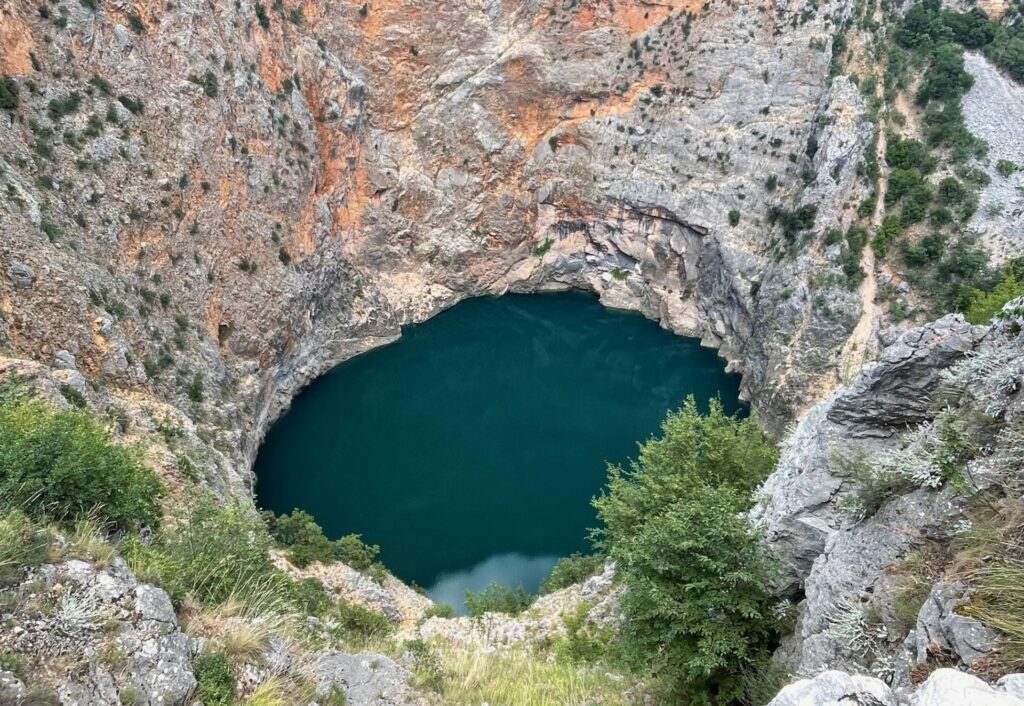
Legend says the following: Many years ago, a wealthy man named Gavan lived in this area with his wife Gavanica and their children. He looked as a man, but his soul belonged to the devil. He harassed his servants and neigbors and his only interest was hoarding wealth. One night, an angel descended from heaven and came to his palace, disguised as a beggar asking for charity. Gavanica refused to give him any food or water. Then the angel pulled out a sword and a violent tempest broke out. The ground split open and the deep holes, now occupied by the Red and Blue Lakes, swallowed up the Gavan family and their entire wealth. The people of Imotski claim that their screams can still be heard from the bottom of the Red Lake when the bora wind blows, and that the remains of the palace can be seen when the water is calm
By the way, can you imagine that no one has ever been able to throw a rock into the lake? A lot of people have tried. They would take a run-up, use special throwing techniques, etc., but no one has ever heard a splash. Now there is a sign near the viewpoint: Don’t throw rocks into the lake!
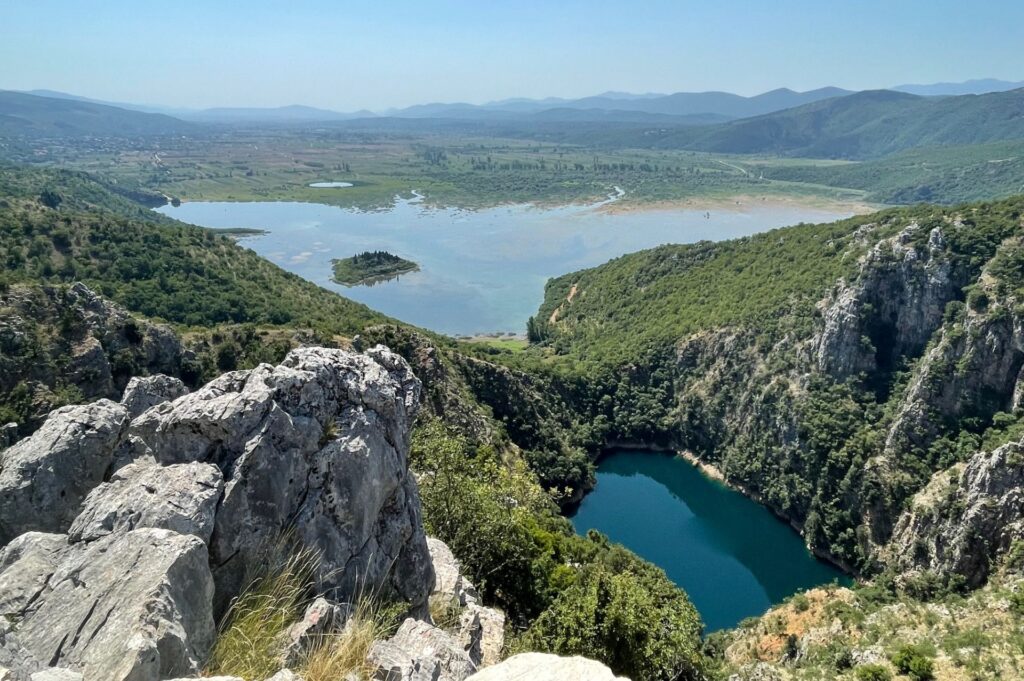
The inhabitants of Imotski rightfully speak of these lakes as symbols and sources of pride for their town. It is less known that in the Imotski County, specifically in the Lokvičići area, there are three other beautiful lakes. Although these lakes are of smaller diameter and less accessible than the Blue and Red Lakes, they are no less attractive. These are Lokvičićko Lake, Knezović Lake and Lake Galipovac, which until recently was known only to locals. These three lakes, together with Prološko Blato and the Imotski Plain, form a unique complex. It is considered that the lakes are connected to the plain because they do not dry out; there is water throughout the year, while water levels vary with the season and amount of precipitation.

Galipovac is the largest of these three lakes. Steep rocks surround the Galipovac water pool, which is about 140 meters long and 115 meters wide. The rocks around Knezović Lake are even steeper, and the lake as a whole is even more inaccessible, but visually it resembles the Red Lake, as if it were its smaller version. Knezović Lake is approximately 40 meters deep, and its water is very clear for most parts of the year. Along the road we stopped at an attractive viewpoint, a great place to make photos of the lakes and the Imotski plain. I had never expected to find such an amazing place, as these lakes are still rather unknown.

At Prolosko Blato we also saw an island called Manastir with the remains of a Franciscan monastery. The Franciscans lived here from the 16th to the beginning of the 18th century during the Ottoman rule over these regions.
Finally, we continued our trip to another beauty, the Green Lake, actually a reservoir created by the construction of a dam in the village of Ričice and the submergence of the Ričice field. The lake has a very characteristic green color and we really had the feeling that we watched a surrealistic painting!
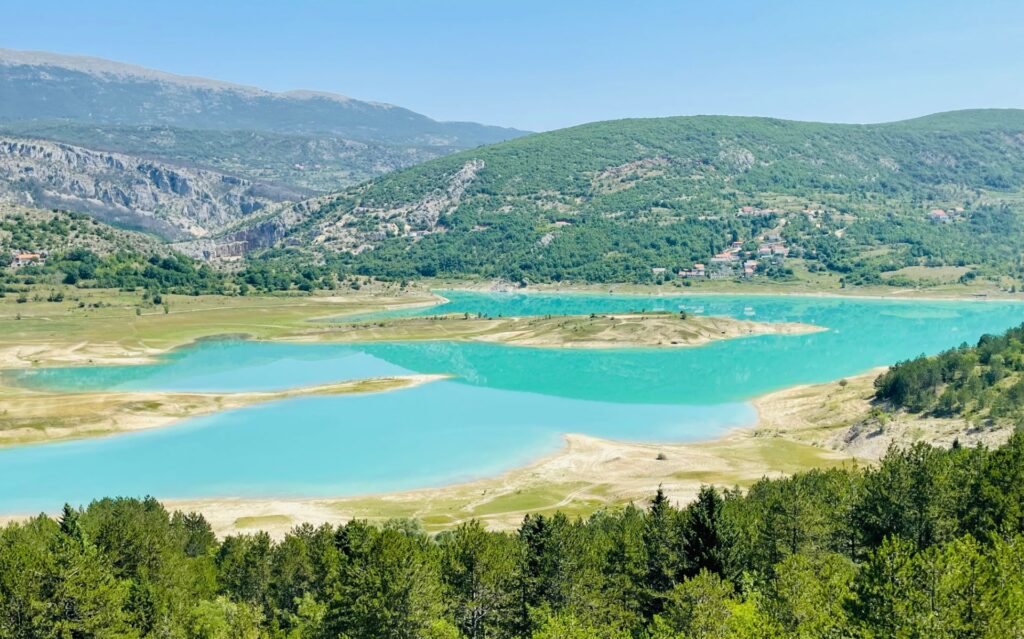
Visiting Imotski and the surrounding lakes was a great experience and I would recommend it to all visitors of the Dalmatian Coast!
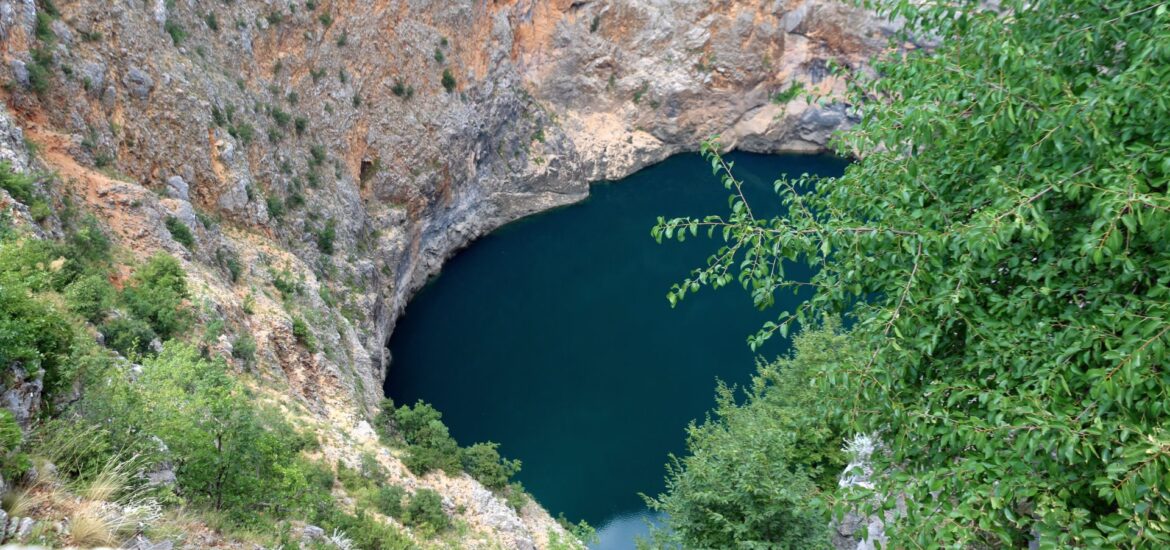
Beautiful! Just to show that there is a lot more to see that we know about!
In september we are coming to Montenegro to see all these beautiful surroundings.